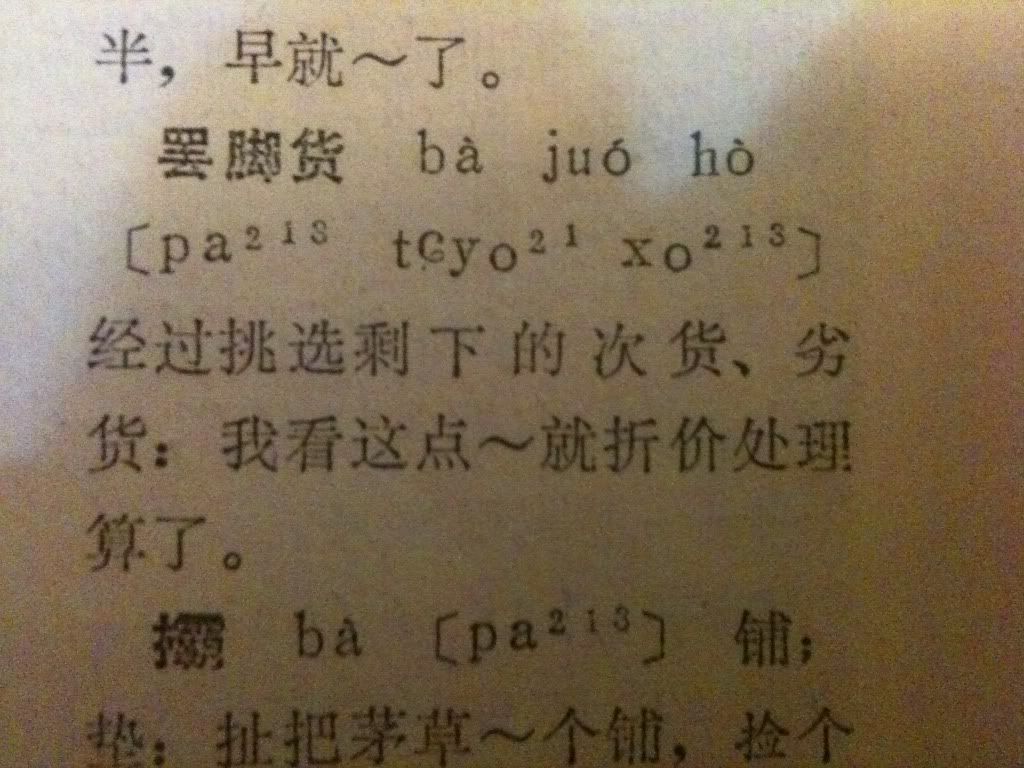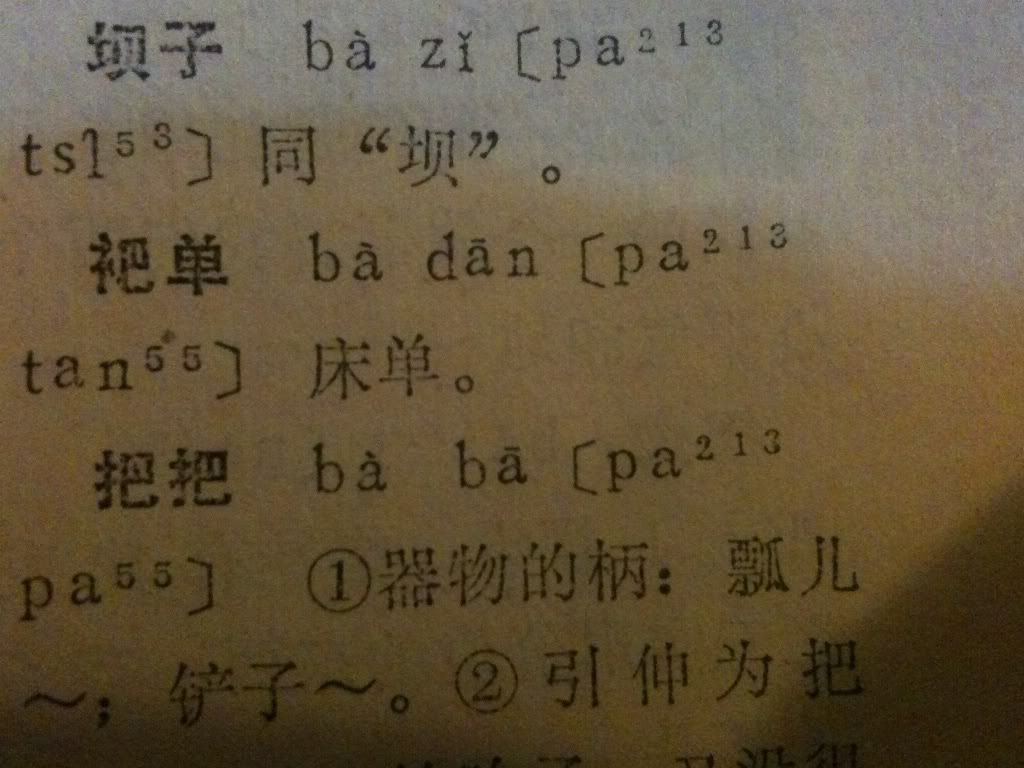I'm making my own dictionary with a lot of nonstandard pinyin...
i.e.: one of the words the pinyin should be: ba4 juo2 ho4
but, pleco, automatically, changes it to: ba4 ju5o2 hong4
I'm assuming there is a list of what is a pinyin "word" and juo doesnt fit it but ju does...where hong comes from I really don't know
but is there a away to fix it + other nonstandard pinyin problems?
another example:
ba3 be2r
becomes: ba3 bei2r
--edit--:
also, is there anyway to add images into the pleco through the user dictionary?
I have a character that seems to 打不出来 but i have an image file of the character that could be used...
i.e.: one of the words the pinyin should be: ba4 juo2 ho4
but, pleco, automatically, changes it to: ba4 ju5o2 hong4
I'm assuming there is a list of what is a pinyin "word" and juo doesnt fit it but ju does...where hong comes from I really don't know
but is there a away to fix it + other nonstandard pinyin problems?
another example:
ba3 be2r
becomes: ba3 bei2r
--edit--:
also, is there anyway to add images into the pleco through the user dictionary?
I have a character that seems to 打不出来 but i have an image file of the character that could be used...



